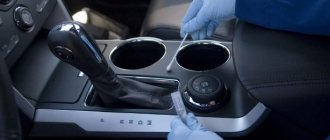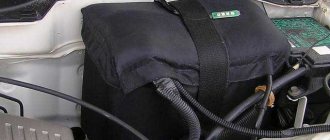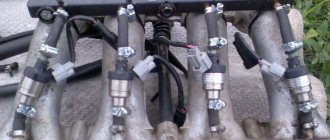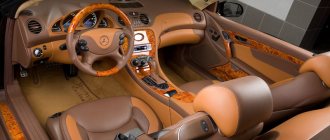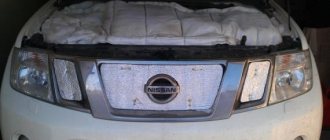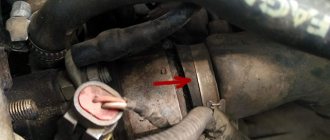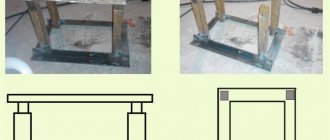Cleaning: how to properly flush a car engine when changing the oil and when is the best time to do it
What to wash with
When the car is new, the problem of how to properly flush the engine when changing the oil does not arise. After all, it does not yet have a solid mileage, the owners say, in addition uttering a phrase about the inappropriateness of the internal combustion engine cleaning procedure. This is partly true, but it is worth remembering that the health of the power plant must be protected from a young age.
Recommendation. To avoid having to wash the power plant, you should pour only high-quality oil from new and not exceed its change interval of 7,500 km.
In the case of a new internal combustion engine, everything is clear. But what to do with contract engines and used cars. The answer is simple - clean the engine and fill it with new, high-quality lubricant.
Nowadays, the insides of the unit are cleaned not with flushing oil, but with catalyzing active chemistry. The special flush is a mineral oil with a package of aggressive additives. It comes in two types:
- five or seven minutes;
- soft (poured into oil 200-300 km before changing it).
Five minutes has a high content of alkaline and other caustic components. Experienced craftsmen express it this way: “It is recommended for use only on new engines or those that have been well cleaned by hand.” Soft flushing fluid causes fewer complaints, and among auto mechanics it is positioned as the only correct option.
How to clean
Initially, the cleaning composition is presented not as a product that washes the engine from the dirt that has accumulated there over several years, but as a detergent to maintain the cleanliness of a new or washed old engine. The conclusion here is that you cannot immediately pour the drug into an internal combustion engine with an unknown service history.
- drain the oil;
- remove the valve cover and oil pan;
- clean the removed elements with aggressive “medicines” (diesel oil, carburetor cleaner, kerosene...) and grinding;
- put everything in place;
- pour oil back;
- Wash the engine for five minutes.
We will analyze the cleaning procedure by rinsing using the LAVR cleaning composition as an example. According to reviews from admirers of the classic LAVR engine flush, the procedure for working with a five- or seven-minute composition looks like this:
- Warm up the engine to operating temperature.
- Turn off the car.
- Pour in the drug.
- Start up the internal combustion engine.
- Wait 5/7 minutes in idle mode.
- Stop the power plant.
- Drain the waste.
Attention! After cleaning with chemicals, the oil is changed to a new one. The filter must also be replaced.
This begs one question: why can’t we do without mechanical cleaning of power plant parts? Here's why: flushing will easily dissolve accumulated deposits in the crankcase and cylinder head. The latter will clog the oil intake screen, which will lead to oil starvation. This is deadly for a regular gasoline internal combustion engine and doubly bad for diesels and turbo engines. The way out of this situation is difficult - it is necessary to completely disassemble the engine and clean it.
It is noteworthy that when changing the oil base (for example, switching from mineral water to synthetic), you should not rinse with store-bought liquids. It is enough to drain the old one, fill in the new one and let the engine idle. Then the lubricant is drained again, the filter is changed, and the updated composition is filled in. You can do it another way:
- update the oil and replace the filter;
- drive 1,500-2,000 km.
Why does a car injector get clogged and how to deal with it?
Most chemical compounds found in fuel, such as sulfur, olefin and benzene, form tar deposits in the vehicle's fuel system. They cannot be removed with gasoline, as they are covered with a dense brown crust. The lower quality fuel is used, the more such deposits accumulate in the car over time.
It is quite logical that the overall efficiency of the car decreases, as the injectors become dirty. Due to the fact that complex injector flushing is a rather labor-intensive procedure, many people drive like this until a critical moment comes. The car will start to stall, the engine will run unstably, and some mornings you may not even start. To prevent this from happening, a liquid called “Laurel” is used. In this case, flushing the injector comes down to a few simple manipulations, which we will talk about in this article. It is also necessary to touch upon the engine cooling system.
What kind of Hi-Gear soft flush is it for a car engine or reviews about it
Why is this composition called “soft”? It's simple - the additive package in mineral oil is selected in a way that is beneficial for the engine. Unlike express washes, the concentration of aggressive components is lower here, and they work for a long time. In addition, the composition from an American company does not destroy rubber elements - this has been proven by experiments.
About the effect of Hi-Gear soft engine flushing, the reviews are unanimous – positive. For example, here is what Oleg N. from Novosibirsk writes:
“After sitting for a long time, my Subaru Outback suddenly started smoking. I filled up High Gear, but decided not to drive, but to “roll out” 200 km in engine hours. As a result, the car stood for 4 hours, idling. There was much less smoke. And after 50 km of running on the new oil, everything returned to normal.”
Much has been said about the effectiveness of the cleaning product. It is worth noting that this is the most successful deoxidizer of bitumen and oily deposits. His credit is that he does his job slowly. This means that malignant products will dissolve into small substances, mix with oil and, without clogging the meshes and small channels, come out as waste. This is confirmed by Nikolay M. from Tula, who has tried almost the entire Hi-Gear washing line. He formulated his review briefly:
- a soft drug is an effective and harmless thing;
- five-, ten-minute periods - they are washed, but the entire oil system is clogged with sludge;
- Flushing oils clean, but significantly damage camshafts and camshafts.
Which oil system flushes do car owners choose - LAVR or Suprotek?
In October 2021, according to PartReview,
LAVR oil system flushes topped more auto ratings than Suprotek:
LAVR is chosen by owners of such cars as:
Ford Focus, Volkswagen Golf, VAZ (Lada) 2110/2111/2112,
and others.
Suprotek oil system flushes have not yet managed to take leading positions in car ratings. You can help if about this manufacturer, indicating your car.
In short
- A competent flushing procedure first involves mechanical cleaning of the oil sump and valve cover, only then using auto chemicals. The essence of its application is simple - pour the composition into the oil, let the engine run and, depending on the type of flushing, drive with it. Next, the waste is drained, the filter is changed and new lubricant is refilled.
- When changing the oil base (synthetic - semi-synthetic, etc.), it is advisable to wash it with new oil, which is planned to be refilled further.
- There are accelerated washes and long-acting formulations, called soft ones. The latter have the advantage.
- Reviews of the Hi-Gear soft product are positive. In the technology of how to properly flush a car engine before changing the oil, there are cases when the flushing life is not rolled out in kilometers, but is developed in engine hours. This technology is less harmful to the engine, and the effect is almost the same.
- The LAVR line of automedicines is highly effective. The most popular is the “soft” liquid Motor Flush Soft.
This post is also more for myself)) Decoked and changed the oil! in 2 hours the liquid was completely gone, although this time I took 330 ml... here is the description of the procedure. Oil as always, and additionally did a rinse with a 5-minute LAVR rinse (I have never rinsed, but this time I decided to do it additionally after decarbonization) Plus I changed the air)
Method of use for cleaning the engine oil system:
Warm up the engine to operating temperature. Pour the drug into the oil filler neck and start the engine. Let it idle for 5 minutes. YOU CAN'T DRIVE A CAR! Stop the engine and drain the used oil. Replace the oil filter and add new oil.
LN2504 LAVR Engine decoking fluid -330.00 RUR; LN1003 LAVR Flushing the internal combustion engine -113.00 RUR; PAA033 PARTS MALL Air filter -144.00 RUR; W81180 MANN Oil filter -RUB 186.00
«The debate about the need for engine flushing has recently intensified. And all due to the fact that more and more used cars are appearing on the market than new ones. Panacea? Or harm? Are there many engine oil system flushes that are actually effective? Let's deal with everything in order.
»
The wash is poured into the oil before changing, mixed with the lubricant that has already exhausted its resource, and allowed to work for some more time (most often 5.10 minutes). Then the resulting liquid is drained and fresh oil is poured into the engine. All of these products contain cleaning additives similar to those found in regular motor oil or exclusively solvents. It is this fact that causes many to doubt whether such a composition will be able to wash away the sludge, oil and fuel combustion products that have accumulated over the years, in a few minutes or at least a couple of days of work.
You can flush the engine with several means - flushing oil, oil or a liquid with which you need to drive for a while. But the most popular remedy is a 5-minute engine flush . Since the last two drugs are used most often - due to their ease of use, we will consider their effectiveness in more detail.
About the car cooling system
When antifreeze turns an abnormal color, usually bright orange, there is rust in the system. In this case, it is necessary to flush the radiator and all channels. You can do this either independently or at a service station. “Lavr” is suitable as the main remedy. Flushing the cooling system will take quite a long time, since in case of severe contamination the situation will not be improved in one approach.
The first step is to drain the old antifreeze from the system. Next, take “Laurel” and fill one jar, then add distilled water to the minimum. We start the engine and let it run for about half an hour. After that, we drain it and see that there is a lot of rust in the pipes and radiators. It is advisable to repeat the procedure again in the same order. If rust still stands out, then at the third stage we simply use distillate, without rinsing. After the above procedures, fill in fresh antifreeze and enjoy the result.
How does flushing work?
Quick (five-minute) flushing of the engine lubrication system works using a fairly simple method. This composition is poured into the lubrication system, after which the engine should run for about 5 - 10 minutes, and the liquid resulting from mixing is drained. The composition of the product for flushing into the oil before changing includes a large (so-called shock) dose of detergent components . Which in a short time can wash away old dirt, scale, deposits and other debris. This is evidenced by numerous engine flush tests. Their results can be found in sufficient quantities on forums and various resources on the Internet.
Sometimes on the Internet you can find conflicting reviews about a particular product, the essence of which boils down to a negative effect. However, this attitude is often the result of improper application of flushing. If the product contains aggressive substances, then with prolonged exposure to rubber seals there is a risk of damage to the latter. And this leads to an emergency situation. Therefore, before using this or that product, you must carefully read the instructions for its use and act in accordance with it.
Looking ahead, it is worth noting that the effect of using such rinses is indeed observed, but it is not as fantastic as their manufacturers write in the instructions . Therefore, the appropriateness of use remains questionable.
Sequence of actions when washing
First of all, we need “Laurel” - a soft engine flush. It is also advisable to have several liters of gasoline and a special watering can for filling. In the proportions indicated on the can, mix “Laurel” and gasoline, after which we find the tube going from the vacuum pump to the intake manifold, disconnect it and inject the mixture there.
It is necessary to start the engine and keep the speed within 2,500 thousand. At the same time, constantly add liquid to the tube. During this time, the engine will be unstable, but this is normal. Carbon deposits and large amounts of smoke may come out of the exhaust pipe. The exhaust at this time will be extremely toxic, so it is better for them not to breathe. We turn off the engine and let it cool, after which it is advisable to replace the spark plugs with new ones if they are no longer fresh. If the spark plugs are new, it is better to use old ones while washing them, as they are very likely to become coked.
What means are used to flush the engine?
Despite the fact that most washes act similarly, they are still divided into several classes. Among them:
- "Five Minutes" . As a rule, they are based on an organic solvent, which allows you to quickly and rapidly wash away dirt and deposits. The advantage of such products is their high speed of action. Disadvantages - along with dirt, the “five-minute” can wash away the lubricant from working mechanical pairs. As a result, scratches may appear on the parts. Therefore, such drugs can only be used when the engine is idling.
- Soft engine flushes . They are added to the oil approximately 100.300 kilometers before the scheduled oil change. They act more gently than previous products, since their base is created from calcium sulfonates (something like soap and similar detergents). In addition to the base, the composition includes dispersing additives.
- A mixture of the first two options . These can be a variety of compositions containing both solvents and detergent components with additives. As practice shows, universal tools are not as good as special ones tailored to solve a specific problem.
There is another class of rinses, which can conditionally be called folk, but they also belong to the “hard” class. For decades, before the advent of modern chemicals, motorists added various solvents, including acetone or solvent . This solution does exist, but with some limitations:
- The effect of such remedies is very limited in time. They are allowed to work literally for 3.5 minutes. Naturally, during this time they will only be able to wash off surface deposits.
- Under no circumstances should you increase the speed when there is such a flush in the engine!
As an example, we list several popular compounds belonging to certain classes (naturally, their true number is many times greater).
Remember that all of the listed remedies are preventative and are not intended to decarbonize the engine. And also that before filling in new permanent oil, it is advisable to purge the system with a compressor or use a vacuum pumping device in order to remove all remaining oil mixture in the engine (after traditional draining, about 200.300 grams always remain).
Sequence of actions when washing
Do-it-yourself car interior finishing
First of all, we will need “Laurel” - a gentle engine flush. It is also advisable to have several liters of gasoline and a special watering can for filling. In the proportions indicated on the can, mix “Laurel” and gasoline, after which we find the tube going from the vacuum pump to the intake manifold, disconnect it and inject the mixture there.
It is necessary to start the engine and keep the speed within 2,500 thousand. At the same time, constantly add liquid to the tube. During this time, the engine will be unstable, but this is normal. Carbon deposits and large amounts of smoke may come out of the exhaust pipe. The exhaust at this time will be extremely toxic, so it is better for them not to breathe. We turn off the engine and let it cool, after which it is advisable to replace the spark plugs with new ones if they are no longer fresh. If the spark plugs are new, it is better to use old ones while washing them, as they are very likely to become coked.
Active additives - good or bad?
There are a large number of both supporters of chemically active components and those who categorically refuse to use them. Both the first and second are based on life experience, technical knowledge or simply expert advice.
First, you need to understand how flushing works on car systems. Let's highlight the main strengths and weaknesses:
- chemically active components, which can be called aggressive, have a negative effect on all rubber gaskets and seals. This leads to their accelerated wear;
- if the viscosity of the additive does not correspond to the viscosity of the oil, then its use is strictly prohibited, as indicated by the manufacturer on the packaging with flushing;
- Low-quality products for removing oil deposits only make things worse (they clog the catalytic converter, spark plugs), resulting in more problems than they are worth.
That is why not every car owner is satisfied with the result.
About the manufacturers of washes
DIY car interior lighting
One of the most popular liquids with the largest number of positive reviews is “Lavr”. This manufacturer has proven itself to be the best. This liquid must not be poured into the tank, as indicated on the label. According to owner reviews, the average rating for the liquid is 4 out of five. Many people say that you shouldn’t expect a miracle, but the product copes with its immediate task as it should.
Another popular one. Its cost is approximately the same as that of “Lavr” (a little more expensive, but not significant). As for the ratings, it’s also 4/5. True, experts say it is no worse than Winx, but less harmful to health. A product like High Gear is expensive, but it also cleans somewhat better. Well, now let's return directly to our topic.
